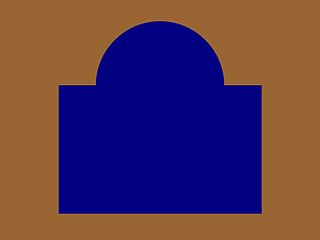The 123rd Battalion, Royal Grenadiers, CEF was a unit in the Canadian Expeditionary Force during the First World War. Based in Toronto, Ontario, they began recruiting in November 1915. After arriving in England, they continued to train as an infantry battalion for several months, but just before mobilizing to France in January 1917, the battalion was redesignated the 123rd Pioneer Battalion, Royal Grenadiers, CEF.

The 31st Battalion (Alberta), CEF, was an infantry battalion of the Canadian Expeditionary Force during the Great War. The battalion recruited in Alberta and was mobilized at Calgary. The battalion was authorized in November 1914 and embarked for Britain on 17 May 1915. On 18 September 1915 it disembarked in France, where it fought with the 6th Infantry Brigade, 2nd Canadian Division in France and Flanders until the end of the war. The battalion was disbanded in August 1920.

The 58th Battalion, CEF was an infantry battalion of the Canadian Expeditionary Force during the First World War.
The 27th Battalion, CEF was an infantry battalion of the Canadian Expeditionary Force during the First World War. The battalion was authorized on 7 November 1914 and embarked for Great Britain on 17 May 1915. It disembarked in France on 18 September 1915, where it fought as part of the 6th Infantry Brigade, 2nd Canadian Division in France and Flanders until the end of the war. The battalion was disbanded on 15 September 1920.

The 22nd Battalion, CEF, was an infantry battalion of the Canadian Expeditionary Force in the Great War.

The 78th Battalion, CEF was an infantry battalion of the Canadian Expeditionary Force during World War I. The 78th Battalion was authorized on 10 July 1915 and embarked for Great Britain on 20 May 1916. It disembarked in France on 13 August 1916, where it fought as part of the 12th Brigade, 4th Canadian Division in France and Flanders until the armistice. The battalion was disbanded on 15 September 1920.
Brigadier-General George Stuart Tuxford, was a pioneer of the Buffalo Pound Lake District, Saskatchewan, and later a senior officer in the Canadian Expeditionary Force (CEF). During the First World War he served first as officer commanding the 5th Battalion and later as general officer commanding 3rd Canadian Infantry Brigade, 1st Canadian Division.

4th Battalion, CEF was an infantry battalion raised as part of the Canadian Expeditionary Force for service during the First World War. Raised in Canada in September 1914, the battalion sailed to the United Kingdom within weeks of its establishment. After a short period of training it was committed to the fighting on the Western Front, remaining in France and Belgium until the war ended. It returned to Canada in mid-1919 and after its personnel had been demobilized, the battalion was subsequently disbanded in 1920.

The 2nd Canadian Mounted Rifles Battalion, was authorized on 7 November 1914 as the 2nd Regiment, Canadian Mounted Rifles, CEF. The battalion recruited in Victoria and Vernon, British Columbia, and was mobilized in Victoria. An earlier incarnation was raised for Boer War.

The 5th Battalion, CEF, known as "Tuxford's Dandys," was an infantry battalion of the Canadian Expeditionary Force during the Great War.

The 102nd Battalion, CEF, (initially the 102nd Battalion (Northern British Columbia), then after August, 1917, the 102nd Battalion (Central Ontario), CEF) was an infantry battalion of the Great War Canadian Expeditionary Force.
The 18th Battalion, CEF, was an infantry battalion of the Canadian Expeditionary Force in the Great War.

The 4th Battalion, Canadian Mounted Rifles was authorized on 7 November 1914 as the 4th Regiment, Canadian Mounted Rifles, CEF and embarked for Britain on 18 July 1915. It disembarked in France on 24 October 1915, where it fought as part of the 2nd Brigade Canadian Mounted Rifles until 31 December 1915, when it was converted to infantry and allocated to the 8th Canadian Infantry Brigade, 3rd Canadian Division. The regiment was redesignated the 4th Battalion, Canadian Mounted Rifles, CEF on 1 January 1916 and was disbanded on 6 November 1920.

The 24th Battalion, CEF, was an infantry battalion of the Canadian Expeditionary Force during World War I.

The 28th Battalion (Northwest), CEF was an infantry battalion of the Canadian Expeditionary Force during the Great War.

The 8th Battalion, CEF, also known by the nickname of The Little Black Devils of Canada, was an infantry battalion of the Canadian Expeditionary Force during the Great War. The battalion was authorized on 10 August 1914 and embarked for Great Britain on 1 October 1914. It disembarked in France on 13 February 1915, where it fought as part of the 2nd Canadian Brigade, 1st Canadian Division in France and Flanders until the end of the war. The battalion was disbanded on 15 September 1920.

The 46th Battalion, CEF, was an infantry battalion of the Canadian Expeditionary Force during the Great War.

The 49th Battalion, CEF, was an infantry battalion of the Canadian Expeditionary Force during the Great War.
The 15th Battalion, CEF was an infantry battalion of the Canadian Expeditionary Force during World War I. The 15th Battalion was authorized on 1 September 1914, embarked for Britain on 26 September 1914, and arrived in France on 15 February 1915. The battalion fought as part of the 3rd Canadian Brigade, 1st Canadian Division in France and Flanders throughout the war. The battalion was disbanded on 30 August 1920.
The Royal Grenadiers was an infantry regiment of the Non-Permanent Active Militia of the Canadian Militia. The regiment was unique in its history as it was only one of two regiments in the Canadian Army to be designated as a grenadier regiment. In 1936, the regiment was amalgamated with The Toronto Regiment to form The Royal Regiment of Toronto Grenadiers.















